FESTIVALPROGRAM BLOG
EXCERPTS IN GERMANSIMPLICITY - the art of complexity - ARS ELECTRONICA 2006 - Festival für Kunst, Technologie und Gesellschaft - Linz, Do 31. August – Di 5. September
9
Jun
Prix Ars Electronica | posted by Cornelia Sulzbacher | at 14:00:00
Stephan Pirker - Jury Member "u19 - freestyle computing"
Stephan Pirker was born in 1971 in Innsbruck and studied sculpture at the Linz University of Art. He has shown his installations and short films at exhibitions in Innsbruck, Bozen, Graz and Linz. Pirker’s "The Singing Skeleton Pilot SSP04" was featured at the 2005 Ars Electronica Festival. His works have been singled out for recognition with numerous prizes (e.g. Haller Kurzfilmtagen). Pirker is a member of the artists group "bu'nostik."
9
Jun
Prix Ars Electronica | posted by Maria Hieslmayr | at 09:15:00
Markus Seidl (AT) a.k.a mexx - Jury Member "Net Vision"
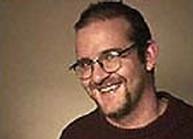 © Ars Electronica Center
© Ars Electronica Center
After working behind the wheels of steel and being member of the rap posse "flavour force" Markus Seidl moved over to several attempts to interweave "real" public space with virtual public space, working mainly with the Stadtwerkstatt/Linz and the Kunstradio/Vienna. Since 1996 he has been working on fundamental radio with his long term collaborateur August Black.
Together with Elisabeth Schimana he realized the project "a village does nothing" where they persuaded a village to do nothing for a week while substitute personnel did the work. his permanent occupation is to watch the world through a camera’s eye and take a snap every now and then.
8
Jun
Prix Ars Electronica | posted by Cornelia Sulzbacher | at 13:30:00
Gerlinde Lang - Jurymitglied "u19 - freestyle computing"
Since 1998, Gerlinde Lang has moderated "connected", "update" and "homebase," magazine/feature-type programming on the youth/cultural radio station FM4. She also writes the "glamorous" fashion report and is the editor in charge of FM4’s afternoon "IT news" program. Plus, she’s an author and stylist for school magazines "chalk" and "intro."
8
Jun
Prix Ars Electronica | posted by Maria Hieslmayr | at 09:40:00
Eva Wohlgemuth (AT) - Jury Member "Net Vision"
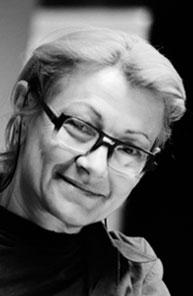 © Norbert Artner
© Norbert Artner
Eva Wohlgemuth (*1955), based in Vienna (A), realized several landart and concept projects before she profiled as a media and web-artist. She is now producing in the field of reactive visual systems: installation (sculpture, draw, paint) and media. E.W received several prizes and took part in selected exhibitions, amongst them the Documenta X (Web Section)
7
Jun
Prix Ars Electronica | posted by Maria Hieslmayr | at 18:10:00
Daniela Pühringer (AT) - Jury Member "the next idea"
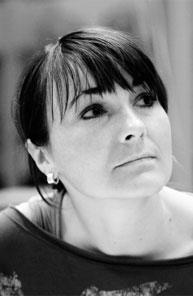 © Norbert Artner
© Norbert Artner
Daniela Pühringer is working in the communication department of the VOEST-Alpine. Her emphasis is on the organization of the VOESTIVAL, which is a major cultural event in Upper Austria.
7
Jun
Prix Ars Electronica | posted by Cornelia Sulzbacher | at 14:00:00
AGF aka antye greie - Jury Member "Digital Musics"
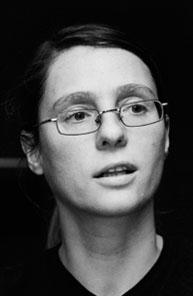 © Antye Greie
© Antye Greie
AGF aka antye greie is a musician, producer, author and artist living in Berlin. Born and raised in East Germany, AGF has been active as a musician since 1990, playing in the German band Laub, as well as performing solo. On her 2001 release Head Slash Bauch (Orthlorng Musork), AGF translated fragments of HTML script and software manuals into a choppy deconstructed pop format. AGF was an artist in residence at Podewil, at the Berlin contemporary center (2001) and composed the sound installation Berlin Klang at the Berlin exhibition at the Sonar Festival in 2000.
7
Jun
Prix Ars Electronica | posted by Maria Hieslmayr | at 09:00:00
Peter Kuthan (AT) - Jury Member "Digital Communities"
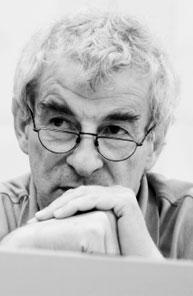 © Norbert Artner
© Norbert Artner
Peter Kuthan (AT), born in 1945, graduated in sociology at the University of Linz. He has been working in Zimbabwe as a journalist and consultant in development cooperation from 1989 until 1992. Since 1992 he has been working as freelance consultant for evaluation for the Austrian Ministry for Foreign Affairs and Austrian Development Agency in the field of development cooperation. He is chairman of the Austria Zimbabwe Friendship Association. In 2001 he has started the Tonga.Online project which is aiming to provide the Tonga minority along the border between Zimbabwe and Zambia with access to modern ICT tools for education and cultural self representation. He is currently lecturing in International Development Cooperation at the University of Vienna.
6
Jun
Prix Ars Electronica | posted by Maria Hieslmayr | at 18:05:00
Steven Clift (US) - Jury Member "Digital Communities"
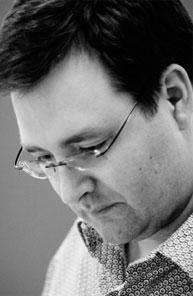 © Norbert Artner
© Norbert Artner
is an online strategist and public speaker focused on the use of the Internet in democracy, governance, and community. For the last decade he has worked to fundamentally improve democracy and citizen participation through the use of the Internet. One of world's leading experts on e-democracy, he is actively networking people around the world determined to make a difference with this new media.
6
Jun
Prix Ars Electronica | posted by Cornelia Sulzbacher | at 11:00:00
Tereza Szente - Jurymitglied "u19 - freestyle computing"
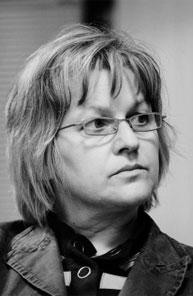 © Norbert Artner
© Norbert Artner
Tereza Szente was born in 1958 in Rumania, and studied visual media design, graphic design and photography at the Linz University of Art. She teaches at various educational institutions (Linz University of Art, Hagenberg Technical College) where she specializes in visual communication and multimedia. At the Linz University of Art, Szente is also working on developing a Web-based online system for modular elementary training in digital media for designers, and holds continuing professional education seminars in media technology and didactics.
6
Jun
Prix Ars Electronica | posted by Cornelia Sulzbacher | at 09:15:00
Yuko Nexus 6 - Jury Member "Digital Musics"
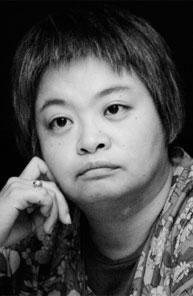 © Norbert Artner
© Norbert Artner
Yuko Nexus 6, born 1964, attended Kansai University in Osaka, Japan and holds a B.A. Degree in Sociology. She has frequently performed in Asia, Canada and the US. She has been a part-time lecturer at Chukyo University sinca 2001 and a part-time lecturer at Nagoya University of Arts and Sciences since 2002. Kitamura has been a member of Women’s Performance Art Osaka since 2001.
5
Jun
Prix Ars Electronica | posted by Maria Hieslmayr | at 17:40:00
Christa Sommerer (AT) - Jury Member "the next idea"
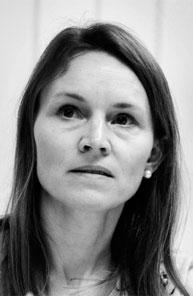 © Ars Electronica Center
© Ars Electronica Center
and Laurent Mignonneau (F) are internationally renowned media artist working in the field of interactive computer installation. They currently work as researcher and artistic directors at the ATR Media Integration and Communications Research Lab in Kyoto, Japan and as Associate Professors at the IAMAS International Academy of Media Arts and Sciences in Gifu, Japan. They also hold a position of Visiting Research Fellows at MIT Center for Advanced Visual Studies in Boston USA.
Mignonneau and Sommerer have collaborated since 1992, and their interactive artworks have been called "epoch making" (Toshiharu Itoh, NTT-ICC museum) for pioneering the use of natural interfaces to create a new language of interactivity based on artificial life and evolutionary image processes. Their collaboration has been influenced by the combination of their different fields of interest, including art, biology, modern installation, performance, music, computer graphics and communication.
5
Jun
Prix Ars Electronica | posted by Maria Hieslmayr | at 13:50:00
Ingvar Söjberg (SE) - Jury Member "Interactive Art"
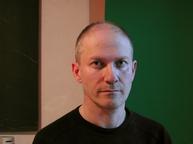 © Ingvar Söjberg
© Ingvar Söjberg
Artist, Artistic Director / Head of Art & Technology program, The Interactive Institute. Professor in Fine Art
ART WORK Selected shows (with The Interactive Institute)
2005
Institute of Contemporary Art, ICA. London Design og Arkitekt Museum, DOGA. Oslo Beall Center. Los Angeles Mar’s Gallery of Contemporary Art. Moscow Moscow Biennale, Art Digital 2004. Moscow
2004
Ludwig museum of Contemporary Art. Budapest Avesta Verket. Avesta Wired NextFest. San Francisco
2003
Centre Pompidou. Paris Museu da Casa Brasileira, São Paol Skulpturens Hus. Stockholm
2002
Electrohype, Malmö Konsthall. MalmöStenersen Museum. Oslo
2001 Ars Electronica, OK Center. Linz Tomorrows world. London
Commission
2004
Member of the Swedish Government Strategy-group on IT-policy; subgroup Culture & IT. Head of the Digital Art Group
Member of the concept team for planning a Swedish Design Centre
2005
Member of Board for ADRA - Art Driven Research Association
Member of reference group for the art and research initiative “The Material Point”
Member of reference group for the city planning initiative “Kista Art City”
5
Jun
Prix Ars Electronica | posted by Cornelia Sulzbacher | at 09:00:00
Elisabeth Schimana - Jury Member "Digital Musics"
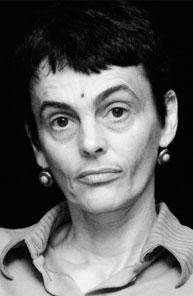 © Norbert Artner
© Norbert Artner
Elisabeth Schimana was born in 1958 in Innsbruck and works as a no-singer, -performer, -composer, -radio artist and artistic process manager in an electronic environment. She studied at Vienna’s University of Music and the Performing Arts and at the Universities of Vienna, York and Keele. Schimana began working on the “Klangnetze” (sound networks) project in 1994 and has been its regional director in Lower Austria since 1998. That same year, she received the Province of Lower Austria's Award of Recognition for Music. Since 1997, Schimana has been working together with the Theremin Center in Moscow.
In 2000, Schimana was named a member of the board of directors of V:NM – Society for the Advancement of New Music. The following year, she was granted a postgraduate grant by the Province of Lower Austria/Art Section.
In 2002, Schimana spent a term as a trainee at the Moscow Cultural Forum, founded Salon Elise, served as guest composer at the Institute for Electronic Music in Graz and was guest artist at Werkstadt Graz.
In 2005, she was involved in setting up the Institute for Media Archeology, which she now heads.
4
Jun
Prix Ars Electronica | posted by Maria Hieslmayr | at 18:20:00
Andreas Hirsch (AT) - Jury Member "Digital Communities"
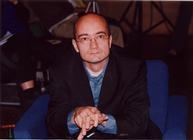 © Sabine Starmayr
© Sabine Starmayr
Specialist in conceiving and engineering cultural systems. Two decades of work for leading cultural organizations in the arts, theatre, music, film, literature and the media include conceptualizing and curating as well as developing and managing projects. He has created numerous media environments and online projects, among them the first Internet café in Vienna. His written contributions to print and online media—including service as editor-in-chief of Supervisor Magazine—deal with the social and cultural impact of digital technology and various aspects of cultural systems.
4
Jun
Prix Ars Electronica | posted by Maria Hieslmayr | at 09:30:00
Karin Ohlenschläger (ES) - Jury Member "Interactive Art"
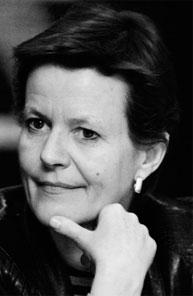 © Norbert Artner
© Norbert Artner
Karin Ohlenschläger (ES)
co-director of the I. International Festival of Art, Science and Technology, Cibervisión 02, as well as of MediaLab Madrid (Conde Duque Cultural Centre, Madrid). Director of Chips: emergent circuits of digital culture, European Institute of Design, Madrid (2001). Director of Cibervisión 99, at the Madrid’s Universidad Rey Juan Carlos (1999); the International Festival of Infoarchitecture, Madrid (1997); as well as IN ART-International Cybernetic Art Festival, Teneriffe (1996), and the International Cideo Forum at the former Spanish Museum of Contemporary Art in Madrid (1986-88).
4
Jun
Prix Ars Electronica | posted by Cornelia Sulzbacher | at 09:15:00
Sabine Hirtes – Computer Animation / Visual Effects Juror
Sabine Hirtes studied visual communication at Aachen Technical College und completed a course of training in computer graphics as well as an introduction to the Macintosh and PC systems and Alias 3D software at Munich’s Media Digital Institute. She went on to teach creative computer animation at the POLYGON Institute in Ludwigsburg, and worked as art director and operator using FGS 4500, TDI Explore (on a Silicon Graphics workstation) and Mac running Freehand, Photoshop, Pagemaker, MacroMind Director and Lumena software.
In April 1993, Hirtes was named assistant for digital image design at the Film Academy of Baden-Württemberg under Prof. Thomas Haegele, supervised student projects and gave instruction on 2D and 3D software (Softimage, Explore, AliasIWavefront, Matador Cineon, Flint, Harry, Paintbox, Avid Media Suite Pro). On the side, she was active as a freelance 2D and 3D computer graphics designer. In 1992 and 1994, she participated in workshops on MacroMind Director 3D organized by the Goethe Institute in the Ivory Coast.
In 1996, Hirtes worked together with Film Academy students to organize Jill Scott’s "Digital Body / Automata" installation for the Media Museum in Karlsruhe.
The following year, she transferred to the Department of Graphic Media at the ZKM – Center for Art and Media Karlsruhe, where she was responsible for video studies and the computer animation program. At the same time, she was working together with a number of different artists (using Softimage, Maya, Media 100, Inferno, analog video editing) and co-produced (with Thomas Zeitlberger) Kirsten Geisler’s installation “Dream of Beauty 2.0.” The following year, Hirtes once again took part in a Goethe Institute workshop, this time at the Cairo Film Institute on the subject of Softimage. In Cairo, she then worked for the video department of Al Ahram, produced TV clips (MIT Maya 2.0) and taught at the Cairo Film Institute.
In 2000, Hirtes returned to Germany and took a temporary teaching position at the Bauhaus University in Weimar (post-production and special effects). In July 2000, she was made art director at Charamel in Cologne, where she was responsible for character development and the implementation of real-time and Internet applications (Max, Filmbox, the company’s proprietary software) as well as for video projects (DPS, Combustion).
Finally, in 2002, Hirtes transferred to the Film Academy of Baden-Württemberg’s Department of Animation, Visual Effects and Digital Post-production as animation software specialist. She teaches introductory courses in 3D and 2D software (3ds Max, Maya, Combustion, Fusion, Shake, Flame, Avid DS, Adobe Video Collection), advises students on the implementation of their projects and works on extramural collaborative efforts.
3
Jun
Prix Ars Electronica | posted by Cornelia Sulzbacher | at 17:00:00
Christopher Lindinger - Jury Member "u19 - freestyle computing"
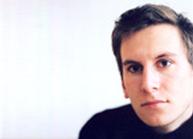 © Ars Electronica Center
© Ars Electronica Center
Christopher Lindinger studied computer science at the University of Linz and cultural management in Salzburg. He has worked as a researcher in the field of scientific visualization and as a freelance developer in the entertainment industry. Lindinger has worked for Ars Electronica since 1997, and is currently head of the Ars Electronica Futurelab’s Department of Research and Innovation. He also teaches at universities in Austria, Germany and Great Britain.
3
Jun
Prix Ars Electronica | posted by Cornelia Sulzbacher | at 13:30:00
Naut Humon - Jury Member "Digital Musics"
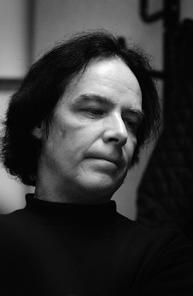 © Naut Humon
© Naut Humon
He is the director of operations for the RECOMBINANT MEDIA LABS in San Francisco. This network of A/V based actions houses the Surround Traffic Control Cinesonic system for performance exhibitions and international residencies. He is also producer and curator for the Asphodel label along with his own projects for speaker-screen installations.
3
Jun
Prix Ars Electronica | posted by Cornelia Sulzbacher | at 13:30:00
Shuzo John Shiota - Jury Member "Computer Animation / Visual Effects"
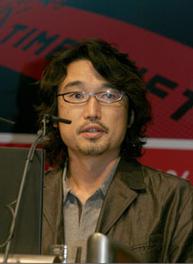 © Shuzo Shiota
© Shuzo Shiota
President/CEO, Executive Producer Shuzo, born in Hyogo prefecture Japan, moved to California when he was 6 years old where he spent the next 9 years of his life. He finished his education in Japan, majoring in International Law at Sophia University. He began his career working for Nippon Steel Corporation, the largest steel firm in Japan, where he specialized in business and market planning in the newly found Information Technology Division.
After leaving Nippon Steel, he worked as an independent business consultant, where he met Toshifumi Kawahara, founder of Polygon Pictures. Upon Toshi’s behest, Shuzo took initiative in starting up Dream Pictures Studio (DPS), a joint venture between Namco, Sony Computer Entertainment, and Polygon Pictures. After the closure of DPS, Shuzo joined Polygon Pictures (Polygon) in 1999, and spear headed the company’s transition from a boutique studio to a full-capacity animation services studio. Polygon now houses 60 artists, and is renowned worldwide for its animation prowess as well as for its efficient production pipeline. Polygon also boasts its ability in creating original characters and content. Its star creation Rocky & Hopper has amassed over 140 million USD in merchandise sales to date.
Shuzo’s produce credit include award winning short subjects “Crocotires: traction AAA”, “Polygon Family Episode 2”, the TV series “Mr.Digital Tokoro”, which was nominated for the Annies in 2001. Shuzo was appointed president and CEO of Polygon in June 2003. He is also a jury member for Prix Ars Electronica 2003 & 2004, as well as SIGGRAPH 2004.
2
Jun
Prix Ars Electronica | posted by Maria Hieslmayr | at 18:50:00
Masaki Fujihata (US/JP) - Jury Member "Interactive Art"
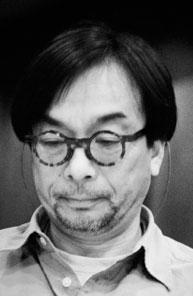 © Norbert Artner
© Norbert Artner
Masaki Fujihata (J) was born in 1956. He is a board member of the Japan Animation Film Association. Since 1987 Fujihata has been a member of ASIFA, since 1990 Associate Professor, Faculty of Environmental Information at Keio University. Since 1998 Professor at Keio University, Faculty of Environmental Information; since 1999 Professor at National University of Fine Art and Music, Inter Media Art course. Masaki Fujihata was awarded among others a Golden Nica by the Prix Ars Electronica jury for his entry *Global Interior Project* in the category Interactive Art (1996).
Blog Authors:
Maria Hieslmayr Cornelia Sulzbacher Wolfgang Bednarzek Gerda Hinterreiter Didi Offenhuber Beta Lounge Artists David Cuartielles Sonja Meller StWSt denCity.net
Search:
Categories:
Conferences Animation Festival Events, Concerts & Performances Campus Exhibitions e-lobby Prix Ars Electronica
Recent Posts:
Photographs of the 2006 Festival Media lab thanks! Ars Electronica Center FM4 Live from Ars Electronica in Linz
Archives:
Posts 180 - 160 Posts 160 - 140 Posts 140 - 120 Posts 120 - 100 Posts 100 - 80 Posts 80 - 60 Posts 60 - 40 Posts 40 - 20 Posts 20 - 0


